Product Thinking
Interaction Design
Design System
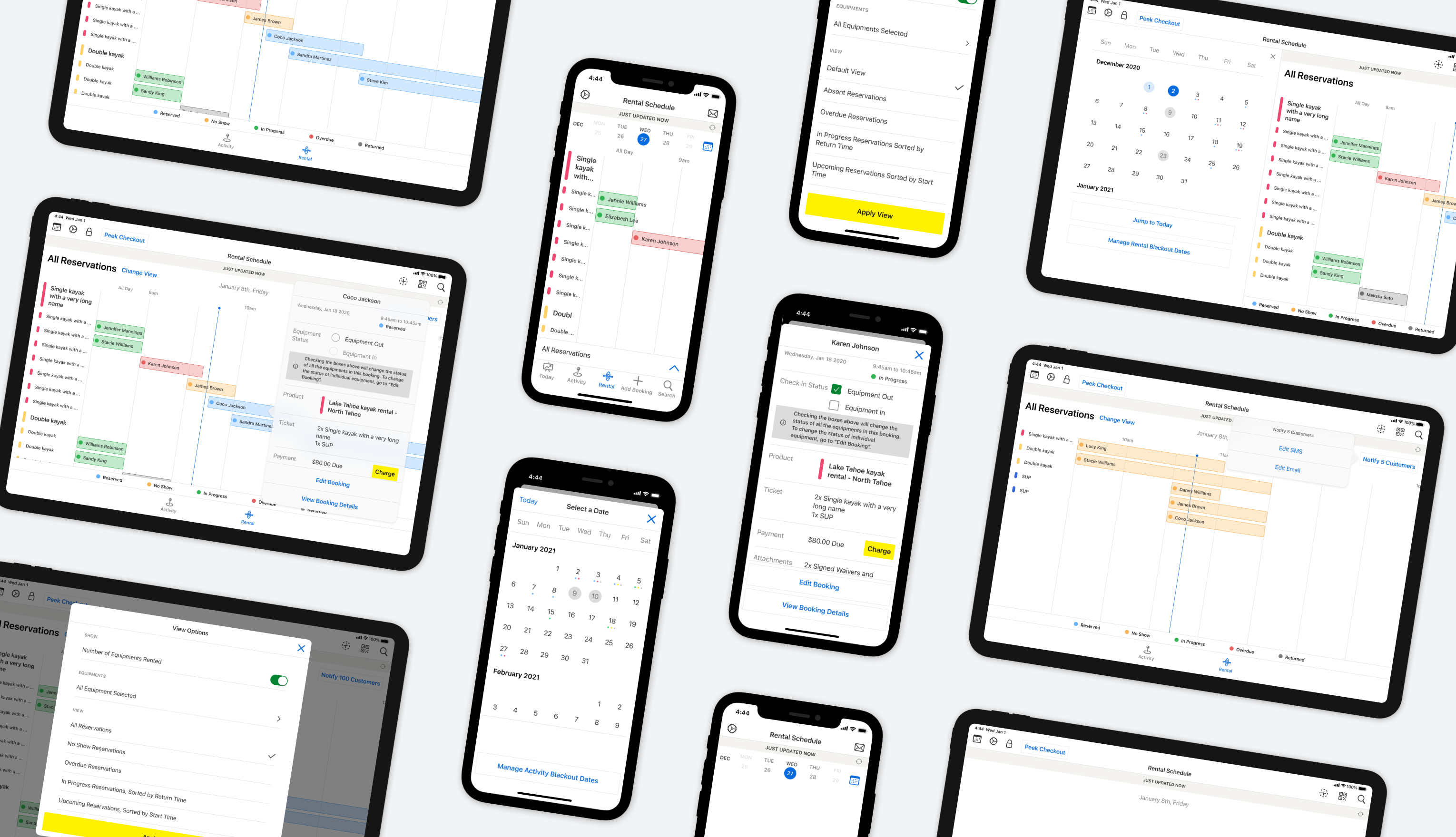
The Context
Schedule view was one of the earliest features built in our app to enable portability. As more and more features were added over years, it has suffered from instability, slow loading speed and confusing UI. This project was a collaborative initiative between design and engineering team to improve the schedule view to make it more usable and valuable for diverse operators.
Design Opportunities
To discover what issues the current schedule view has, I conducted interviews with both internal team members and operators. As it's also the entry point for our iPad app, I also looked up usage date, JIRA tickets, and sent out a mobile user experience survey to find other optimization opportunities.
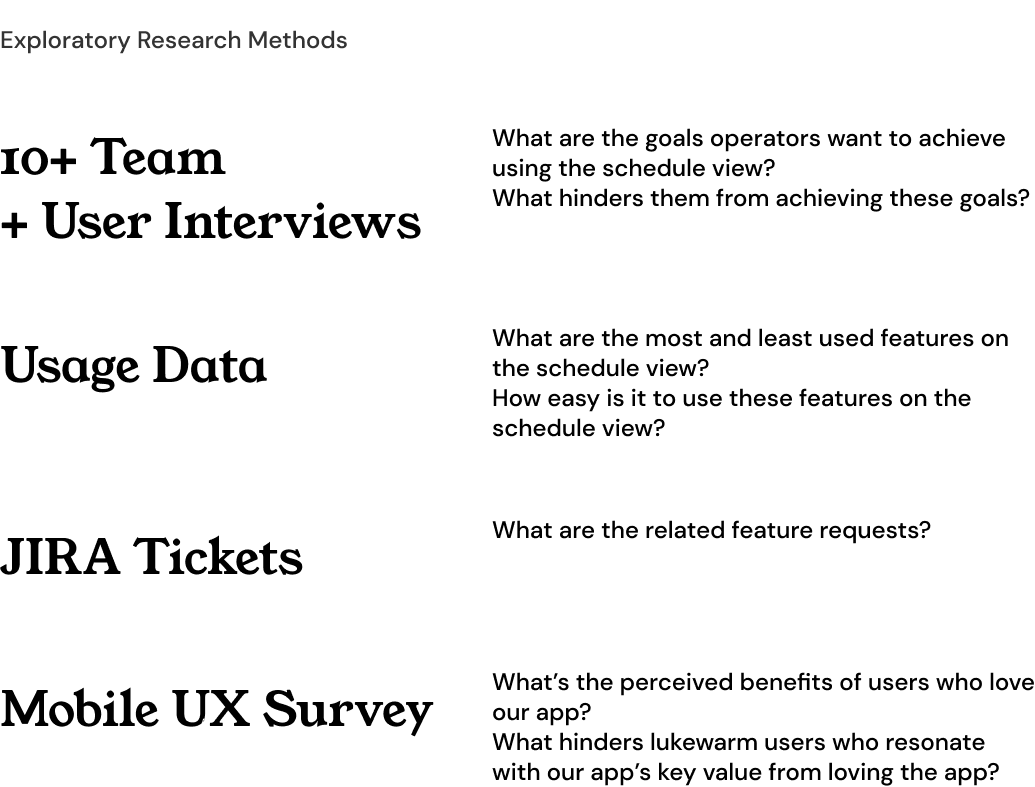
The exploratory research revealed multiple problems associated with the schedule view:
Problem Prioritization
Given a 3-month timeline of design, we couldn't solve all the problems. Which problem should I tackle first? Based on KANO analysis, improving equipment rental experiences on the schedule view should be our #1 priority.
Success Criteria
With this redesign, we wanted to:
Solution Highlight
A timeline view with reservations and their status helps operators get a sense of how busy their days will be in a glance. They can quickly update reservations status in this view.
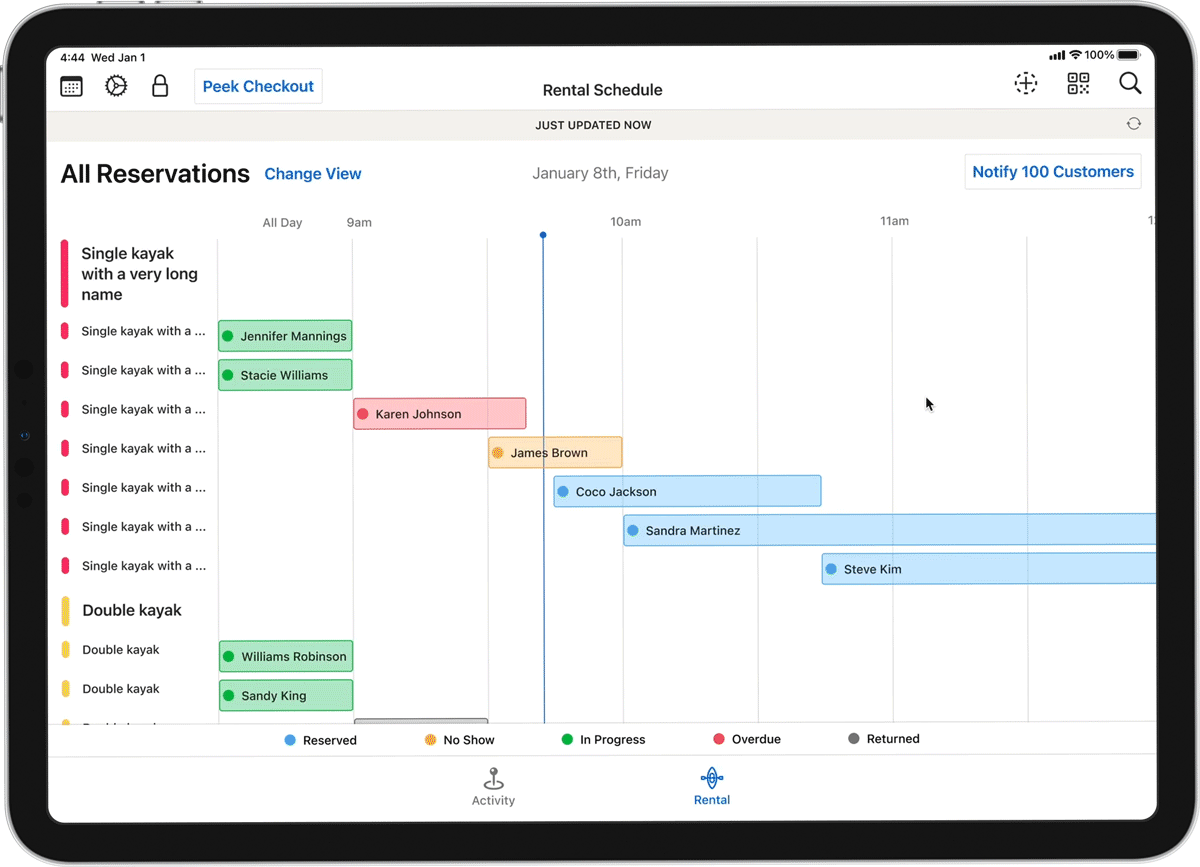
Operators can filter to see a segment of customers and group message them for efficient communication.
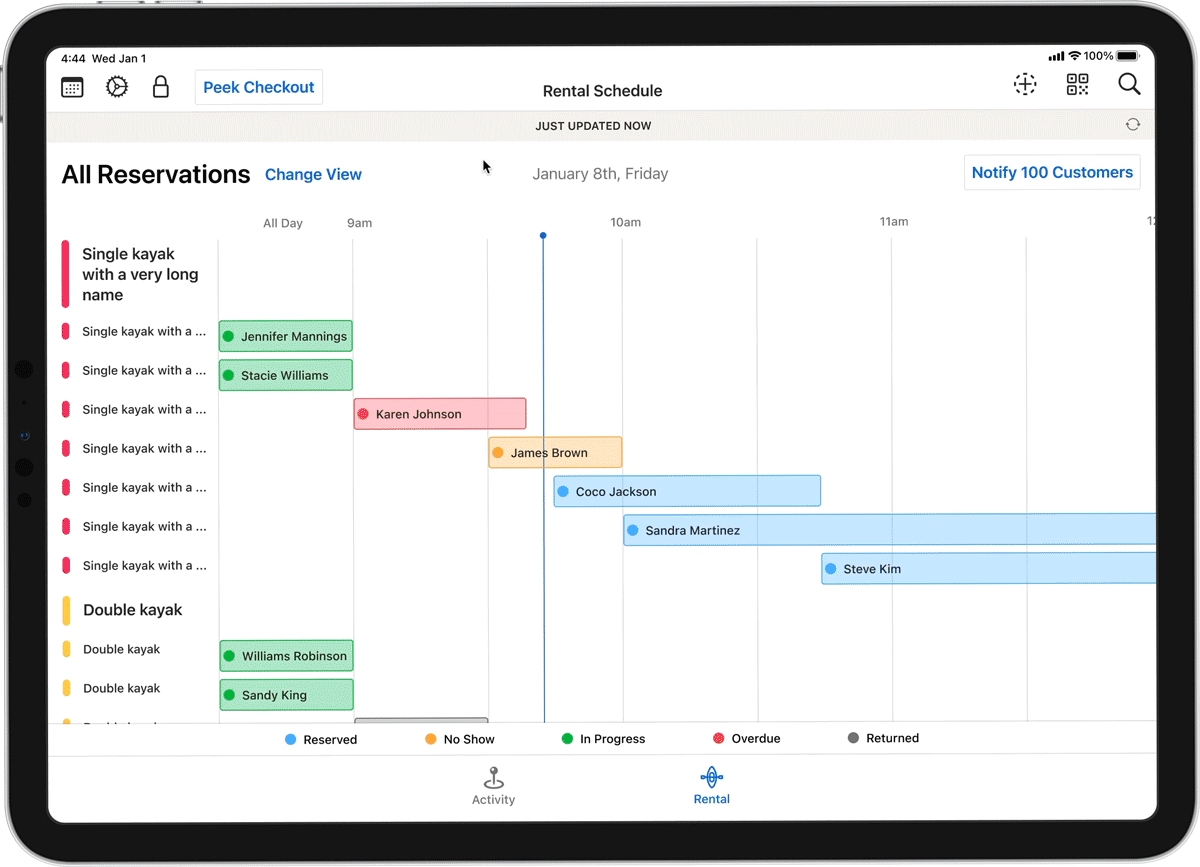
When checking back overdue equipment, operators will be prompted to add additional charges to ensure no revenue will be lost.
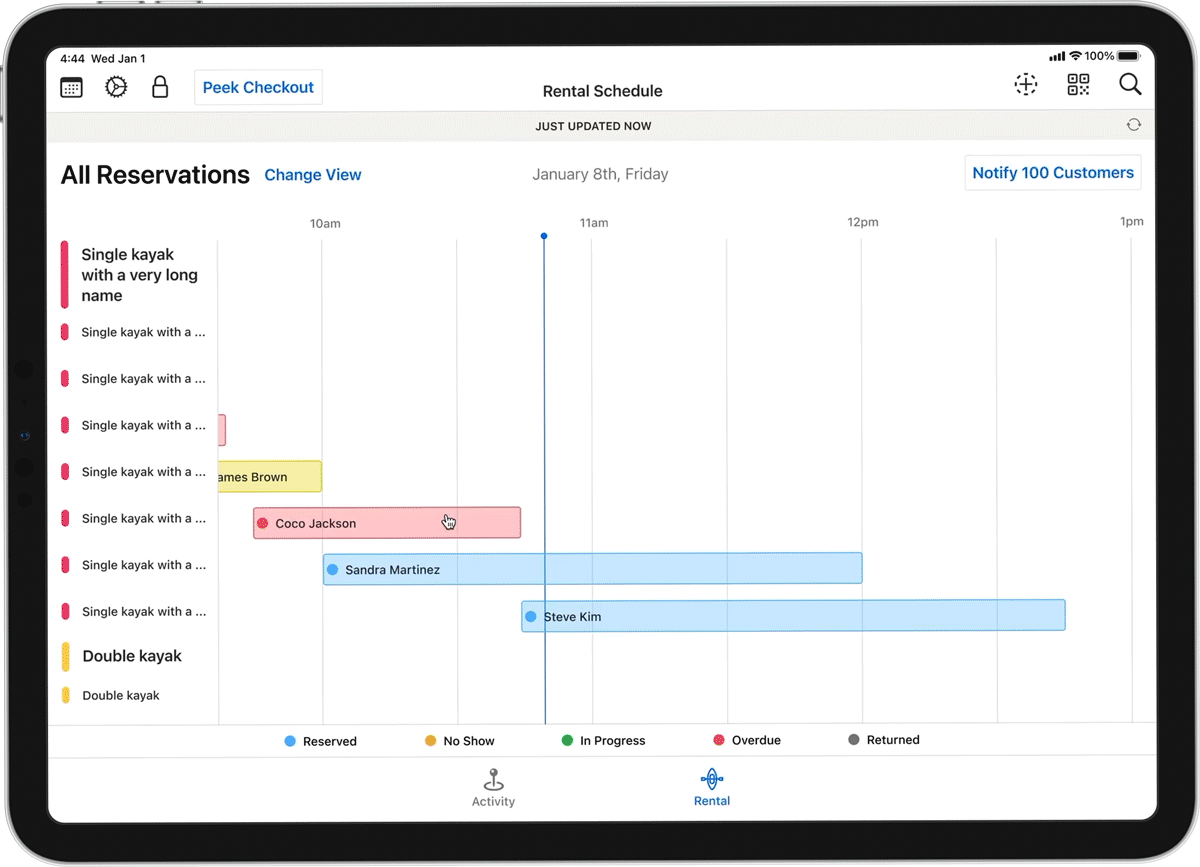
iPhone app was designed to have feature parity with device specific components.
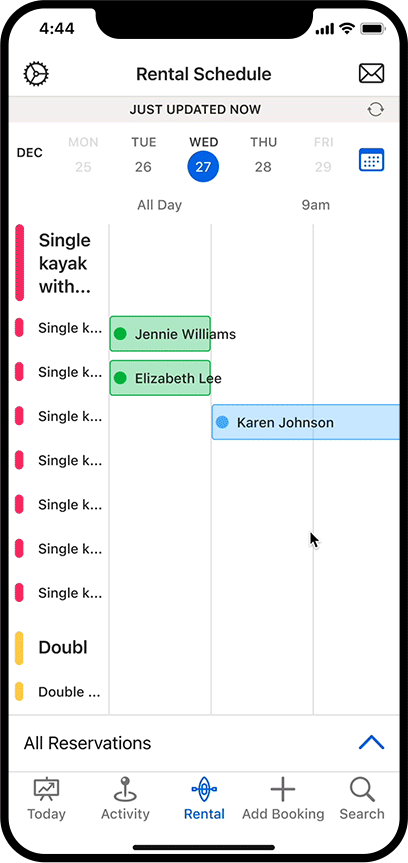
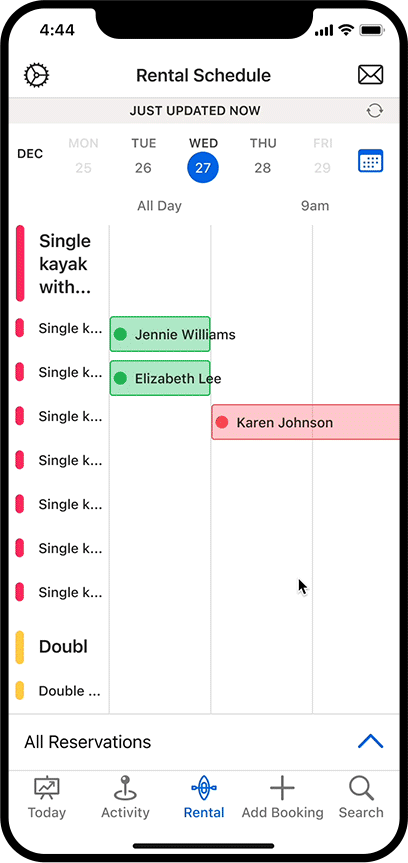
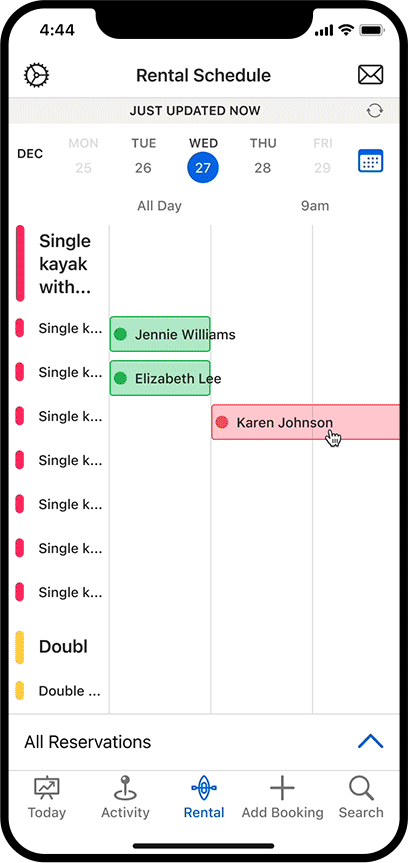
How we got there
To define what's a better experience for rental operators, we need to first understand what they do from day to day and where our schedule view failed to serve them. From the previous interview notes, I created a visualization of their workflows.
The most significant need that differentiated equipment rental operators from activity ones is that they cared about not only when customers check in, but also when they return. It's crucial for them to know the status of each booking so that they can plan for resource allocation accordingly. Another interesting finding was many rental operators were bad at tracking overdue equipment and saw that as a missed revenue opportunity.
Design Concepts
Based on the needs identified, I sketched 5 design concepts. They were used in our user interviews to validate assumptions and anchor discussions.
I compiled the feedback into a comparison chart and rated each concept against the following criteria: understandability, ease to use, scalability, and ease of implementation. It was clear that we should go with Concept 4.
Design Iterations
We wanted to make the new schedule view clean and easy to understand while surfacing all the features and providing flexibility of jumping between dates. I explored different versions of the header area to achieve this goal.
In the end, I decided to minimize the information on the top, and utilize the space at the bottom to show additional information. I also created a bottom navigation bar for switching between activity and rental on iPad and separating these tabs on iPhone after observing how users struggled to find the switch in user testings.
One theme from the usability testing was that operators wanted to customize the views but also to switch between views they often use quickly.
To balance this need and not exploding the engineering scope, I decided to provide preset views that would be commonly used by operators.
Interaction Details
The vertical space for timeline is constrained. To maximize it, I decided to hide the header and bottom bars when users scroll up.
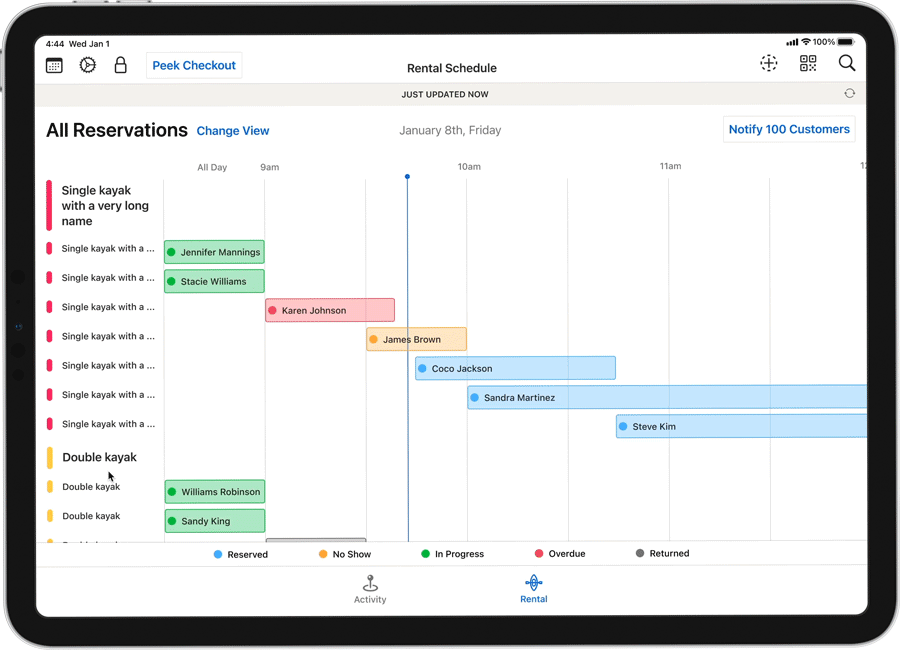
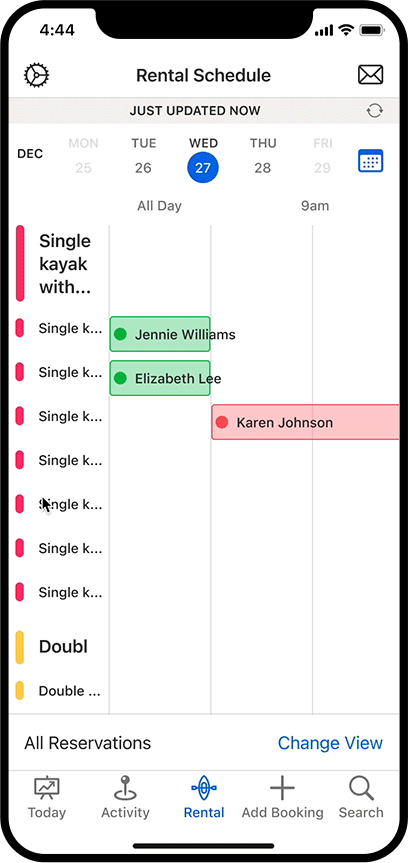
For operators who only have one or two types of equipment, the equipment column on the left will be a waste of space. Thus, to maximize the viewable area, they will be able to hide the left column.
Sometimes operators need more information than the quick pop over to check in or check out equipment. I incorporated different gestures for users to access different modals in this situation. When users tap the "Equipment Out" and "Equipment In" buttons, we will also give haptic feedback on iPhone.
Design System
The new design included a few components that our design system didn't have before. I worked with another designer and engineers to specify and document these components.
Future Improvement
Due to limited engineering resources, we couldn't do everything in this project. Two areas of improvement that will likely have a huge impact on users' workflows were:
Close the Loop
When I left Peek, the project was under development. To close the loop, we planned to do the following: